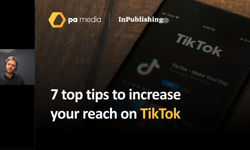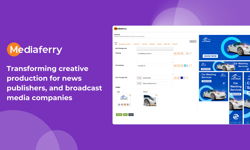
Q: What do you think are likely to be the main publishing trends of 2021?
A:
Digital capability really is the absolute priority for publishers now. This was probably true before the pandemic, but other considerations have less weight now, and for much of the past twelve months, digital has been the only significant route to progress and growth. There has to be an acute focus on digital set up and provision, business model, and constant analysis and review - in order to be able to iterate and add value. Beyond the technology, over the past twelve months, I’ve seen and learnt how media businesses have to support and listen to their people – not just the newer people into the business but often times the more experienced people are ignored – that’s just not tenable now, especially going through the year that we have all had.Q: What are the key dos and don'ts of setting up an effective registration barrier?
A: Change needs to be introduced gently, initially introducing metering with a high number of page views that a user can see without having to register, then reducing this number over time to a much smaller number. Be flexible with what is within and outside the registration wall to best support your business model. Continuously iterate, test and experiment to get the best conversion rates. Make sure you track the data on converting content, ie. the content which gets the most sign-ups or payments. Adjust what content is shown on screen to best achieve conversion, eg. title, image, faded text.
Don't forget the members - make it very easy for them to log in right on the article, eg. for auto login on Apple devices.
For the registration:
- Capture the essential details and permissions, this means you can always follow up in case users drop out.
- Capture all payments / sales conversions.
- Pull-in additional demographic details.
- Ensure the best welcome and onboarding journey.
Q: To what extent are publishers deploying sales and marketing automation? What is the potential in this area?
A:
The potential value from automated user engagement and transaction points is huge. Publishers are generally behind the curve of what is achievable; they tend to defend what has previously made money and this leads to a tendency to overlook how media needs to constantly evolve. What needs to be understood is that all business models and channels benefit from automation, and behavioural engagement data now should inform all decisions and transactions, especially as we open up again over the coming year and beyond.Q: Many publishing websites contain vast quantities of valuable content, much of which never sees the light of day - what is the secret of effective surfacing?
A:
There is no secret – you need a platform which allows you to see who is looking at what and when. We did some work with one client where when we analysed content consumption, they were shocked to learn just how much content had never even been looked at! Editors, journalists, content creators all need to be looking at the top ten pieces all the time. We apply some rules to this:- Not all classic content is valuable, it might have been written for print, or for a report. This would often benefit greatly from a refresh, with new formats, eg. splitting one long piece into multiple shorter ones. Adding new imagery, updating the language etc.
- Content is better surfaced through focusing on continuity, eg. recommending similar articles to the one the user is reading, either through manual or automated recommendations.
- Improving the site search - make it more powerful, improve content drill-downs, improve tagging and the use of the site taxonomy.
- Use more personalised recommendations to surface content to each relevant audience.
- Some content might have had a significant cost, but is simply less valuable as there is a plethora of competing content online. The decision then should be on focusing that content better or creating fresh content that has a stronger impact.
- Make sure the content is surfaced through social media and channels beyond those on the website and search engines.
Q: When it comes to selling digital display advertising, how can publishers successfully increase their rates?
A:
Have a coherent rate card. Demonstrate value by showing and sharing data which proves audience relevance. Serve the advertising on a first party basis. Deliver ROI. Ultimately, you need to sell the benefits! We always recommend having a topic focus, charging higher rates for improved targeting and better reporting. Businesses should move beyond simple banners into higher value directories and lead generation, and more value-add eg. topic sponsors with video, podcast, and insight content generated from the sponsor’s campaign theme. This greatly extends the rate card and value-add.Q: Many publishing companies have a silo approach to data and content: what's the downside to this approach?
A:
See the answer about serving relevant content to hungry users. The silo approach doesn’t really work for any sphere of publishing any more does it? Let’s remember one facet of the traditional publisher’s role which hasn’t changed - which is that you need a holistic overview of the whole operation / enterprise in order to learn, understand and act on how business can be improved. Operations which have no one fulfilling that role risk missing opportunities.
About us
Founded in 2009, Affino provides a ‘Unified Business Platform’ for media, publishing, events, membership and professional services organisations.
The Affino SaaS Platform provides a complete single customer view solution for engaging with and monetising audiences. It combines full-range CRM with Sales and Marketing Automation, Ecommerce, Subscriptions and Memberships, Messaging, CMS, Events, Ad Serving, and Recruitment.
We help streamline and make organisations more efficient, more cost-effective, and more productive, as well as delivering numerous new revenue stream capabilities not possible via alternative means.
The fully GDPR-compliant system is built on the principles of Actionable Intelligence - prompting and triggering intuitive rapid responses based on fully accurate and comprehensive first-hand real-time data.
Web: www.affino.com
Email: jonathan.collins@affino.com
Tel: +44 (0)20 3393 3240










